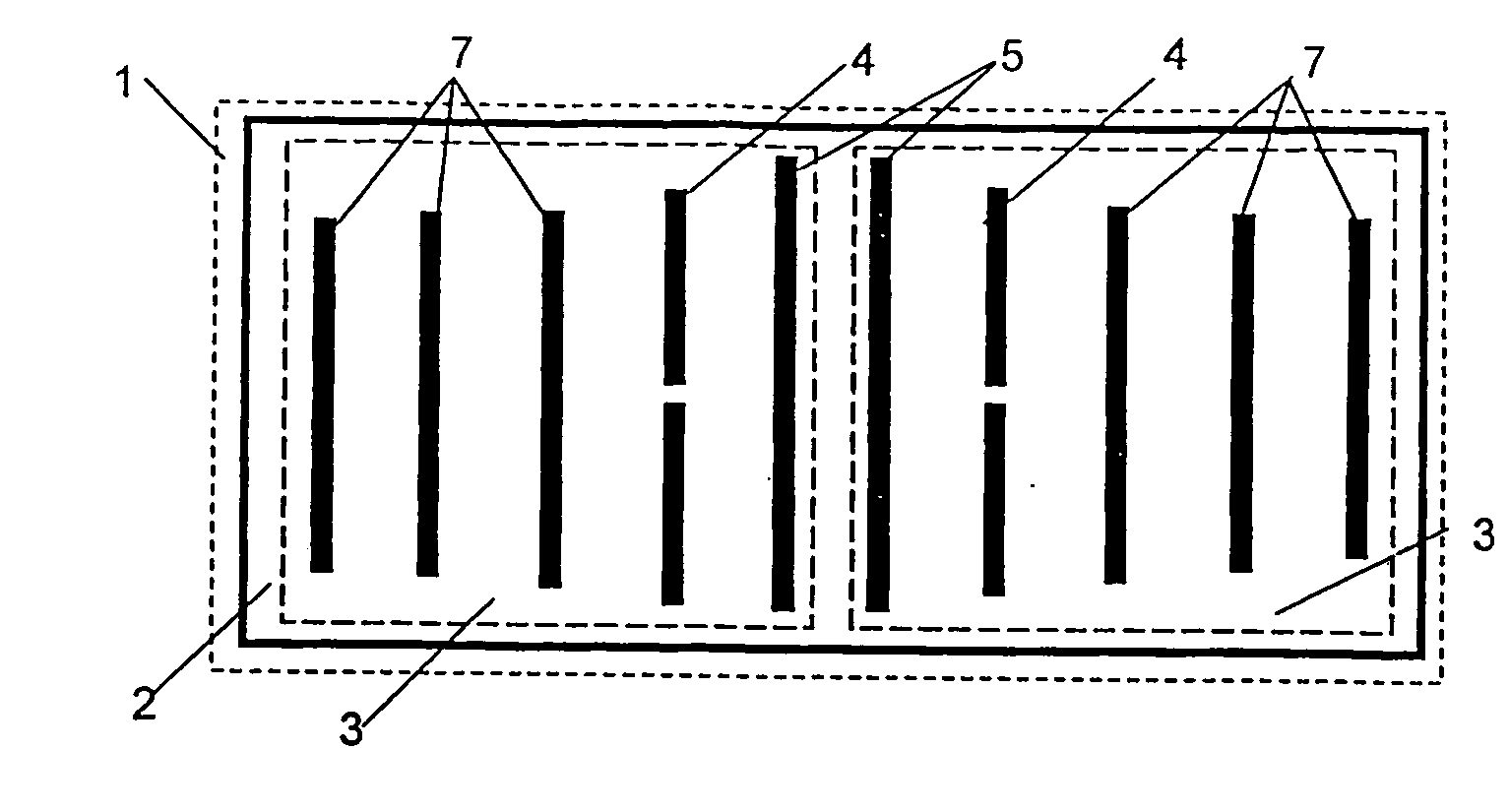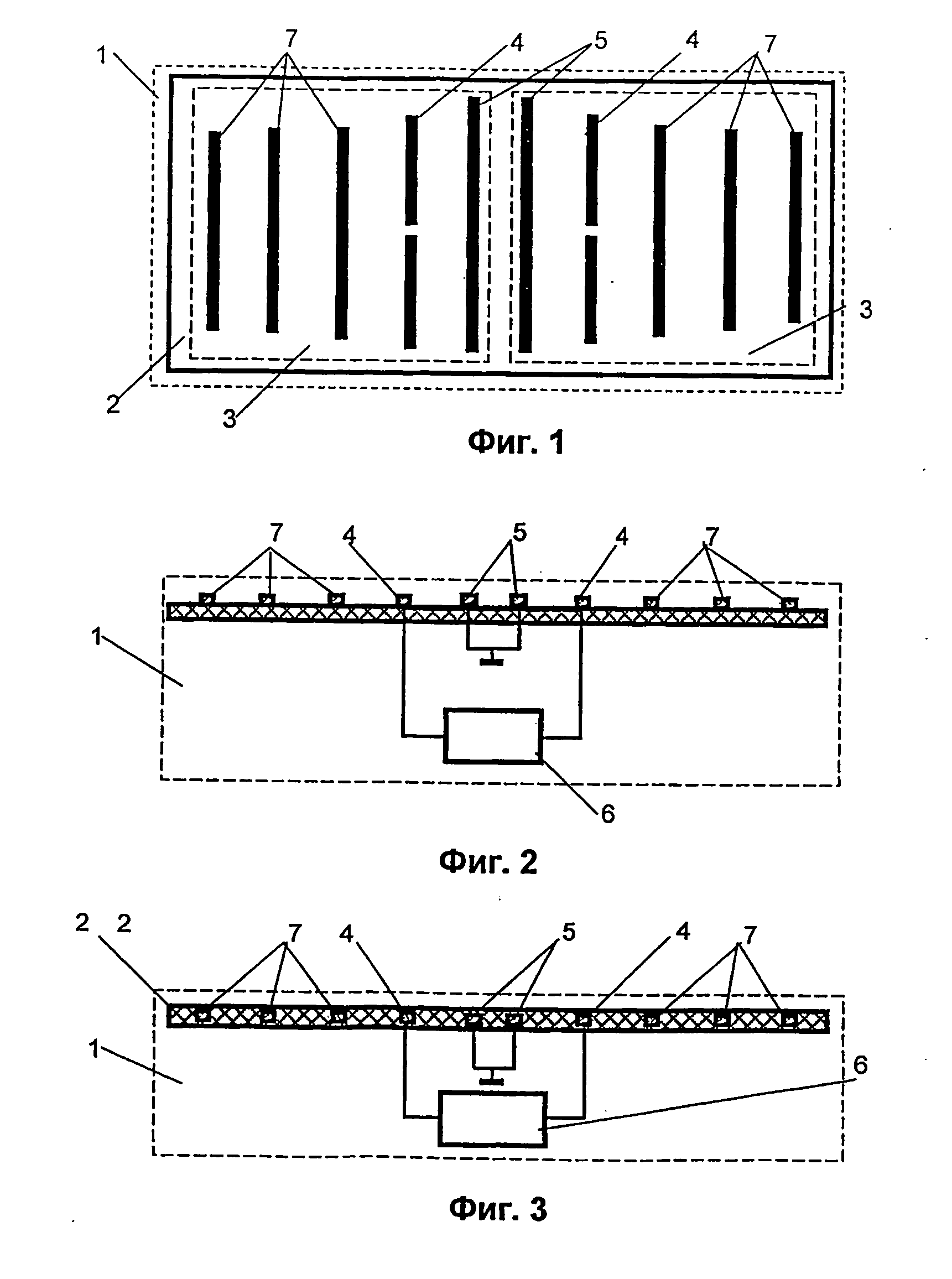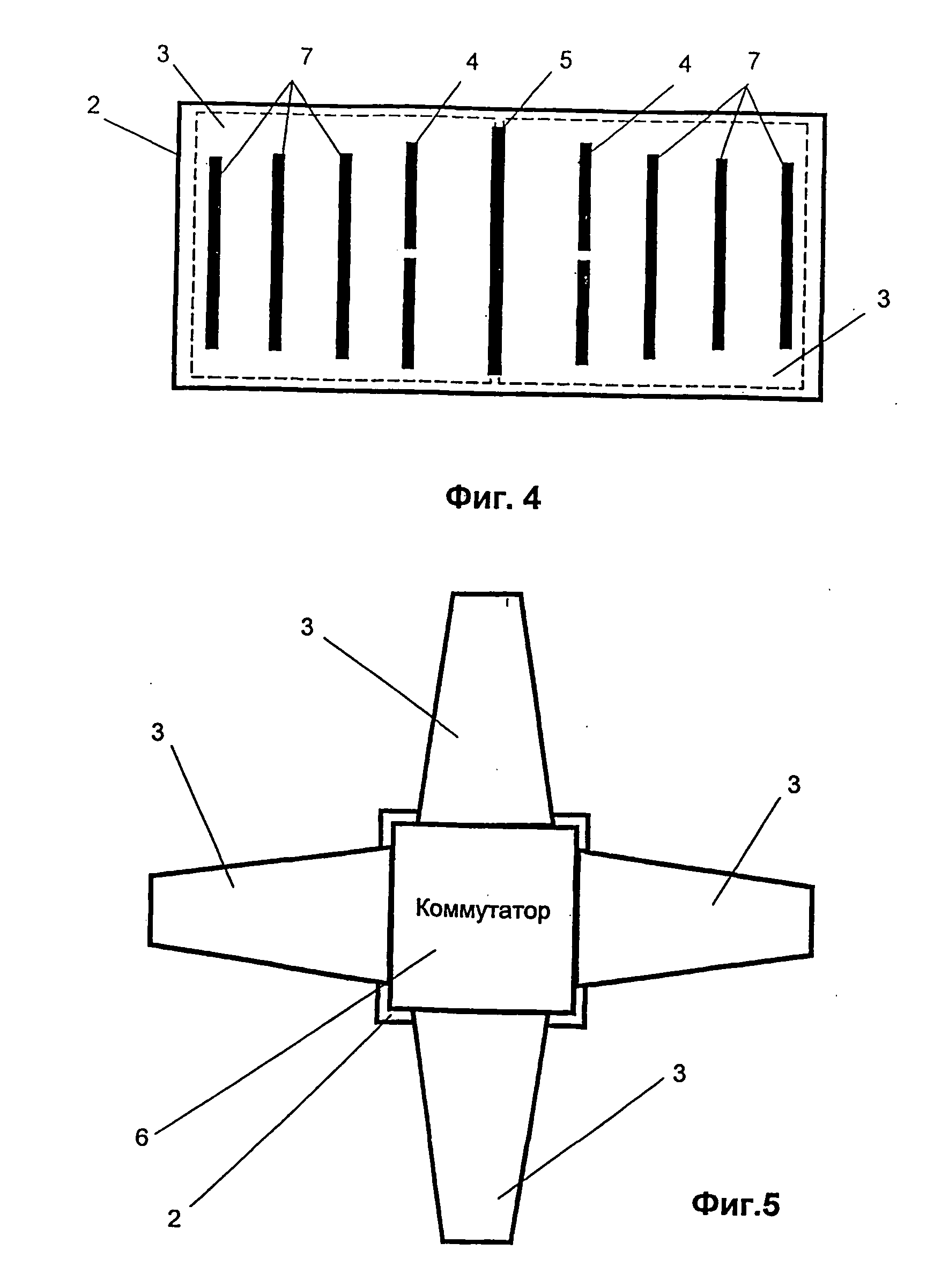Antenna system with a controlled directional pattern, a transceiver and a network portable computer
a technology of transceiver and network portable computer, applied in the direction of portable computer details, instruments, collapsible antennas, etc., can solve the problems of insufficient increase, inability to guarantee the acceptable reliability of radio communication of known transceiving devices, and limited functionalities of known antenna systems. achieve the effect of enhancing the possibility of controlling the directional pattern
- Summary
- Abstract
- Description
- Claims
- Application Information
AI Technical Summary
Benefits of technology
Problems solved by technology
Method used
Image
Examples
Embodiment Construction
[0053] The claimed antenna system 1 in the simplest configuration includes substrate 2, on the surface of which two flat antennas 3 oriented in opposite directions are formed, for instance, by printing (see FIG. 1 and FIG. 2 where two Yagi antennas are shown as an example), consisting of active elements 4, reflectors 5. Active elements 4 are connected to commutation switch 6, controlling the directional pattern of antenna system 1 on the whole. Antennas 3 can be equipped with directors 7 to shape a narrow directional pattern of antennas 3. Antennas 3 can be located both on the surface of substrate 2 (see FIG. 2) and in the body of substrate 2 (see FIG. 3). To reduce the size of antenna system 1, antennas 3 may have a common reflector 5 (see FIG. 4).
[0054] Antenna system 1 may be made, for instance, as four dielectric antennas 3, oriented in a fan-like fashion (see FIG. 5), with commutation switch 6 placed between them. Commutation switch 6 can be equipped with a grounded case whose...
PUM
 Login to View More
Login to View More Abstract
Description
Claims
Application Information
 Login to View More
Login to View More - R&D
- Intellectual Property
- Life Sciences
- Materials
- Tech Scout
- Unparalleled Data Quality
- Higher Quality Content
- 60% Fewer Hallucinations
Browse by: Latest US Patents, China's latest patents, Technical Efficacy Thesaurus, Application Domain, Technology Topic, Popular Technical Reports.
© 2025 PatSnap. All rights reserved.Legal|Privacy policy|Modern Slavery Act Transparency Statement|Sitemap|About US| Contact US: help@patsnap.com



